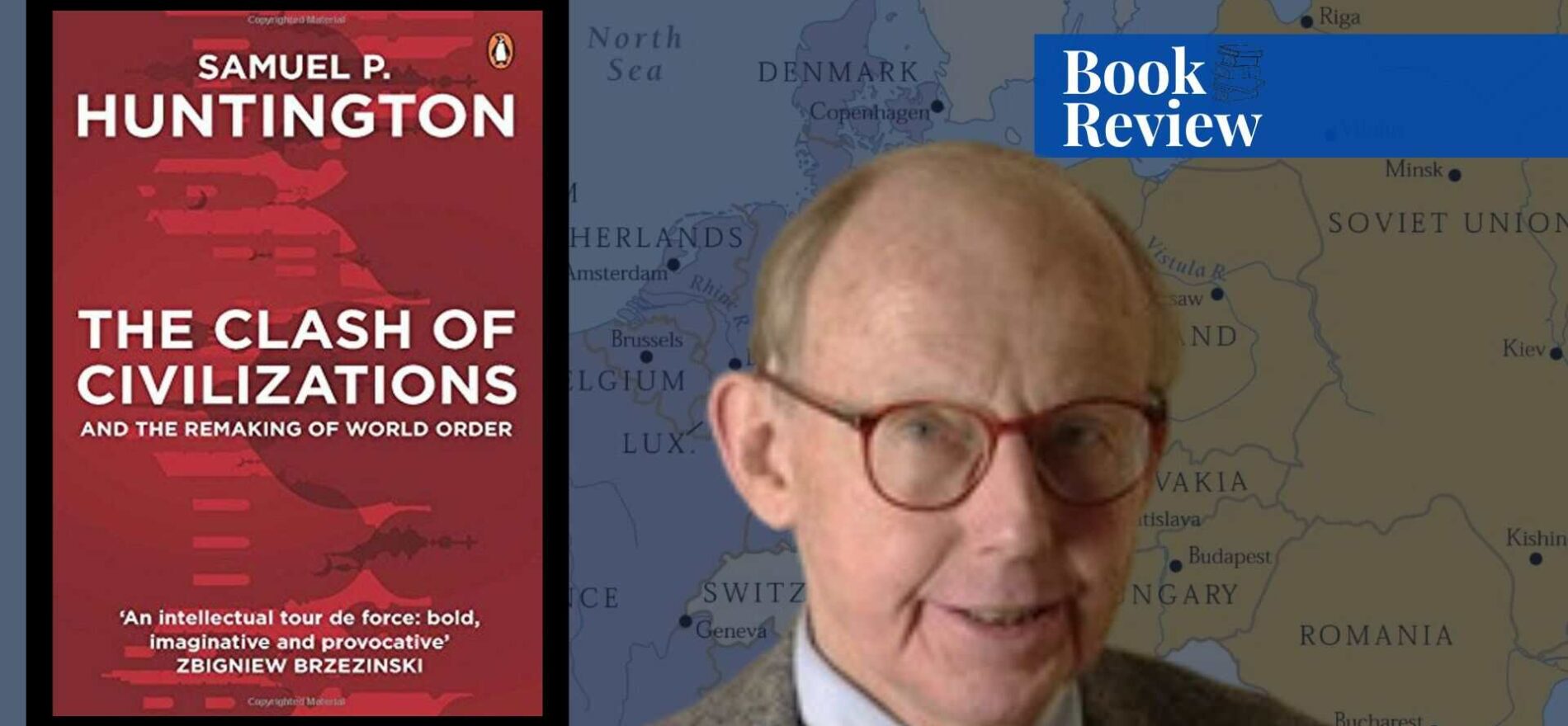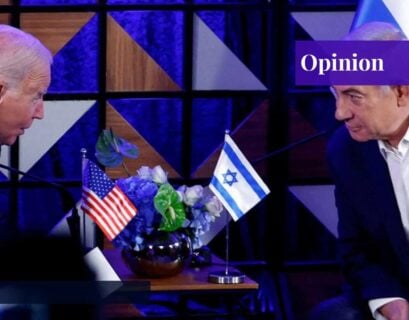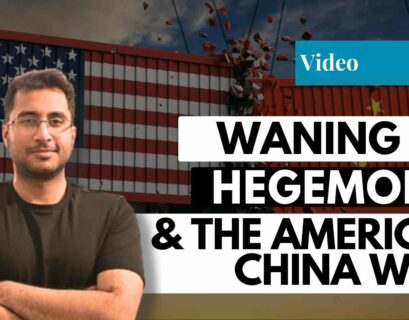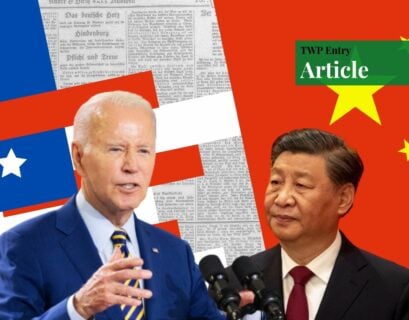Introduction
After the disintegration of the USSR and the end of the Cold War, the world saw the emergence of several theories that aimed to explain world affairs in the post-Cold War era. One such theory was given by an American political scientist, Samuel P. Huntington. He wrote an article in 1993, “The Clash of Civilizations?” that was published in the Foreign Affairs magazine. Later in 1996, Samuel P. Huntington published his book The Clash of Civilizations and the Remaking of World Order in which he explained his theory of the clash of civilizations.
The main idea of his theory was that, in the post-Cold War era, ideological clashes ceased to exist. Further clashes would emerge among nations or people of different civilizations. Likewise, the major battle lines in global politics would be the fault lines among civilizations. Throughout his book, Samuel Huntington has explained the same theory with examples and shreds of evidence. He has divided the book into five major parts. Each part sheds light on a specific dimension of his theory.
Part 1: Major Civilizations According to Huntington
To understand the world, in the first part of The Clash of Civilizations, Samuel Huntington created a civilizational paradigm. He created this paradigm because according to him, after the Cold War, the world has gone towards multiculturism. It means that there is no universal civilization and the countries are combining based on their civilization.
Huntington divided the world into eight major civilizations.
- The Sinic civilization comprised Vietnam, China, and Korea.
- The Japanese civilization originated in Japan.
- The Hindu civilization was based on core Indian culture.
- The Islamic civilization originated in the Arabian Peninsula, and later spread to other parts of the world, namely North Africa, the Iberian Peninsula, Central Asia, Arab states, Turkey, the Persian Empire, and Malaysia. It consolidated the Muslim world.
- The Orthodox civilization existed in Russia.
- The Western civilization was based on Europe and North America.
- The Latin American civilization mainly comprised the Catholic and authoritarian-ruled countries of Central and South America.
- The African civilization existed in African states.
According to Huntington, several factors have increased the civilizational consciousness among these groups. The dominant commonality between them is the technological development and globalization that have led the civilizations to be aware of the existing differences among them. Hence, it creates a sense of polarization, where they act for the betterment of their civilization and view others as enemies. The politics of civilizational consciousness caters to the “us vs. them” mentality. Thus, this phenomenon ignites international conflict among different political systems.
Part 2: The Shifting Civilizational Balance
In the second part of The Clash of Civilizations, Samuel Huntington argues that the world has entered a new phase in which the power of the West is decreasing. To add to that, Huntington wrote his theory as a response to the theory of Francis Fukuyama, which declared that in the post-Cold War era, Western civilization would prevail over other civilizations. Fukuyama considered Western civilization the last surviving human civilization.
However, Huntington rejected this theory and asserted that the power of the West was declining because of the relative increase in the power of non-western countries. This decline in Western power is not rapid and consistent, it faces several ups and downs. Also, the power of the Western states is driven by the body that makes decisions for the states.
To exemplify the relative decline of Western power, Huntington discussed the development of non-western countries, especially Japan and China, that followed their separate path to growth and left westernization for progress. Today, Japan and China have asserted the influence and importance of their cultures as separate civilizations in the international arena because of their economic growth.
Moreover, Huntington also argues the role of religion in the unification of people. He says that the absence of a single political ideology has given a path to religion, as now major civilizations are formed based on cultural and religious ideologies. Such as Christianity, Islam, Hinduism, and Confucianism are the major religions that provide foundations for the major civilizations.
Likewise, Huntington argues that the Islamic resurgence has given Muslims a unifying factor. Therefore, Muslim countries have adopted modern ideas (modernization) and Islamic values. However, they have left the Western values, which emerged as a clash line and caused differences among civilizations.
Part 3: The Emerging Order of Civilizations
In the third part of The Clash of Civilizations, Samuel Huntington argued that the bloc system of the Cold War provided a similar means to the countries by which they combined. Countries that supported communism allied under the roof of communism and those that supported capitalism formed alliances under its umbrella. Therefore, two separate ideological blocs emerged that divided the world into two hemispheres and decided the battle lines. However, the end of the Cold War changed the course of alignment of the countries.
Huntington asserted that the civilizational blocs had replaced the Cold War’s bloc system because countries with similar cultures were creating an alliance of civilizations. The power politics of civilizations are evident through the formation of regional alliances. For example, ASEAN, the European Union (EU), and NAFTA. He also emphasizes the importance of the core states. The core state is one with the leadership ability in similar cultured states. For instance, France and Germany are the core countries in Europe. However, Islamic countries possess no evident core country; therefore, they face issues during the civilizational alignment.
Further, Huntington gave the idea of “torn countries”—states that have not fully identified themselves within a specific identity. For example, Turkey is confused between the Islamic and Western civilizations. Similarly, Mexico is unable to specify its identity either in Latin American civilization or Western civilization. Huntington gave an indicator for the identification of the torn countries. Firstly, the political elites of the torn countries show a strong desire to become part of a particular and famous civilizational bloc. While the public of the torn countries possesses divergent views on this alignment.
Part 4: Clashes of Civilizations
Consequently, in the fourth part of The Clash of Civilizations, Samuel Huntington presents the prediction of a bloody clash among the civilizations. Huntington asserted that non-Western civilizations consider the West as an imperialist because it always tries to maintain its cultural supremacy. To explain this point, Huntington provides many areas that show the desire for supremacy in the West. These areas include the dominance of the Western military, the promotion of Western values, and the restrictions on non-Western immigrants in Western countries.
Later, Huntington presented the reasons for fault line conflicts between the Islamic and Western civilizations, which included the resurgence of Islam, the decline of communism, the attempt of the West to universalize its values, and the increased communication between them that made evident their differences.
However, Huntington predicted a higher-scale conflict would emerge between America and China. Huntington declared that the clash between America and the combination of China’s military power with the East Asian countries’ economic strength would be the most evident conflict in the world. To explain this, he gave examples mainly of the Soviet-Afghan War, which was the first civilizational war. Furthermore, to show the clashes among the civilizations, Huntington draws a map in chapter 9 of his book.
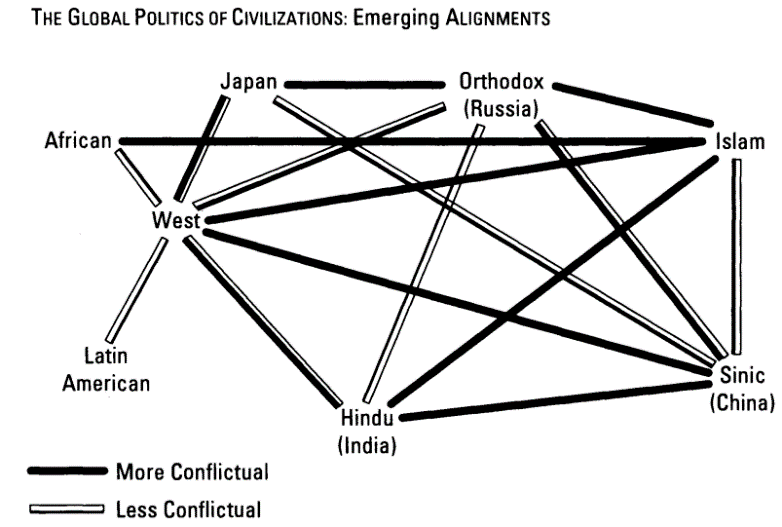
The diagram shows that the West would have fewer conflictual relations with Orthodox, African, Japanese, Hindu, and Latin American civilizations. While the West would have more conflictual relations with Sinic and Islamic civilizations. Similarly, the diagram also shows the level of conflict among the other civilizations.
Furthermore, Huntington provides several characteristics of the fault line wars. It includes the communal conflicts between people or groups from different civilizations. These people or groups usually belong to different religions. They mostly struggle for control over people or the territory. Also, fault line wars are the most durable because several wars emerge as a chain effect after each other. Further, they produce a large number of deaths and refugees.
Moreover, the communal wars and the fault line wars are the products of historical differences, demographic causes, and political and economic reasons within civilizations. Examples of these clashes include the ones in the subcontinent between Muslims and Hindus, the conflicts in the South Caucasus between Armenia and Azerbaijan, and the clashes in Central Asia between the Balkans, Russia, and Turks.
Part 5: Samuel Huntington’s Future Prediction
In the last part of The Clash of Civilizations, Samuel Huntington presents the place of the West in the world. He says that the West should realize that its power is decreasing relatively. Also, policymakers within Western states, mainly those of the US, should be considerate of avoiding the policies that they followed during the Cold War era. The reason behind this is that the world structure and international affairs have changed, and secondly, non-western countries have gained more power.
Likewise, the Western belief in the universality of Western values has become irrelevant due to three problems. Firstly, it is immoral. Secondly, it is false. Thirdly, it is dangerous. The reason behind these three problems is that each civilization has its characteristics, and imposing the attributes of one of them on the others is impossible.
Huntington further presented the internal and external challenges that were faced by the West. The internal challenges exist as the differences over values, morals, and beliefs within the Western people. The external challenge is mainly because of the cultural differences in the world.
To tackle these challenges, Huntington advises the West, mainly the US, to adapt itself to the increasing power of non-Western civilizations. He asks the West to increase cooperation with the other civilizations by achieving greater military, economic, and political integration with them. Also, the West should incorporate the states of Central Europe, the Visegrad countries, the Baltic republics, Slovenia, and Croatia into the European Union and NATO.
Above all, the West should refrain from direct military intervention in the affairs of non-Western states because it is a direct threat to global stability. Thus, these steps will help the West to remain a global political power. Also, they will maintain peace and stability in the world. Otherwise, there will be clashes in the world and it will be a threat to world peace as a whole.
Final Thoughts
The thesis by Huntington has provided several informative and essential arguments. However, just as other theories possess, his work also has some pitfalls. Starting from the academic weak points, Huntington is confused about his stance on a particular discipline. He borrowed the concept of civilization from anthropology, the concept of identity from sociology, and the concept of conflicts from political science.
Huntington, throughout his book, gave several case studies in which he tried to present the justification of his civilizational clash theory. Yet, those case studies also contain several pitfalls. For instance, in the case studies of conflicts in Bosnia, the Persian Gulf, and the Caucasus, mainly in Nagorno-Karabakh, he declares that the conflicts are due to their belonging to divergent civilizations. If they belonged to one civilization, according to him, then they would help each other rather than go into conflict.
However, these cases are different in their locality, nature, the number of players, and the background of the conflicts. In each of these case studies, natural national interests can be identified as the cause of the conflict.
To cap it off, The Clash of Civilizations by Samuel P. Huntington acts as a catalyst for understating several clashes in the post-Cold War era. It is undoubtedly a thought-provoking book because it extends the thinking horizons of the readers and helps them delve into the events of the past and possible future.
If you want to submit your articles and/or research papers, please check the Submissions page.
The views and opinions expressed in this article/paper are the author’s own and do not necessarily reflect the editorial position of Paradigm Shift.
